-
Acoustic detection identifies IEDs – and their explosive yield
A number of different tools are currently used for explosives detection. These range from dogs and honeybees to mass spectrometry, gas chromatography, and specially designed X-ray machines.A new acoustic detection system, consisting of a phased acoustic array that focuses an intense sonic beam at a suspected improvised explosive device, can determine the difference between those that contain low-yield and high-yield explosives.
-
-
Reducing security threats from explosives
Researchers, as part of the Awareness and Localization of Explosives-Related Threats center (ALERT), a DHS Center of Excellence, are working on ways to detect explosives and neutralize their impact. The researchers are developing portable detectors as well as larger systems to scan for explosives. Some technologies will analyze the spectrum of light shining through vaporized samples; others will analyze solid residues.
-
-
A new generation of odor-releasing materials for training dogs
Traditionally, the training of bomb-sniffing dogs has been a hazardous job, but newly developed odor-releasing materials could take the risk out of that work. Scientists are seeking to patent a novel system that can capture scents and release them over time.
-
-
History of explosives highlighted in museum exhibit
For more than seventy years, Los Alamos National Laboratory has been a frontrunner in explosives research, development, and applications. To highlight the Laboratory’s work in the field of explosives, the Bradbury Science Museum is opening a new exhibit, titled “The Science of Explosives.”
-
-
Bomb-detecting lasers to improve security checkpoints
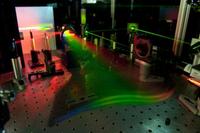
Research has put the possibility of bomb-detecting lasers at security checkpoints within reach by developing a laser that can detect micro traces of explosive chemicals on clothing and luggage. The laser not only detects the explosive material, but it also provides an image of the chemical’s exact location, even if it’s merely a minute trace on a zipper.
-
-
New detectors for chemical, biological threats
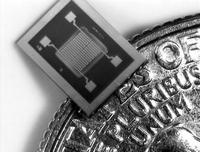
In the late 1990s, Sandia scientists developed a simple-to-use handheld chemical detector for the military, the MicroChemLab. Ever since, Sandia has improved such microfluidics- and microelectromechanical (MEMS) systems-based instruments that identify chemicals based on gas chromatography, or GC, and resonator-style instruments such as surface acoustic wave (SAW) detectors. The lab’s researchers are building on this sensor work to invent tiny detectors that can sniff out everything from explosives and biotoxins to smuggled humans.
-
-
3D Earth model accurately pinpoints source of earthquakes, explosions
During the cold war, U.S. and international monitoring agencies could spot nuclear tests and focused on measuring their sizes. Today, they are looking around the globe to pinpoint much smaller explosives tests. Researchers are working on developing a 3-D model of the Earth’s mantle and crust called SALSA3D. The purpose of this model is to assist the U.S. Air Force and the international Comprehensive Nuclear-Test-Ban Treaty Organization (CTBTO) in Vienna, Austria, more accurately locate all types of explosions.
-
-
New technology improves IED detection
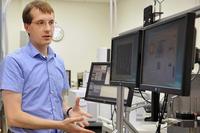
Improvised explosive devices, or IEDs, are homemade bombs that can both injure and kill civilians and service members. One solution to the problem of IEDs is to find them before they explode by detecting the chemicals used in the explosives. Scientists at the U.S. Naval Research Laboratory (NRL) have developed a technology, using silicon to fabricate a sensor that may revolutionize the way trace chemical detection is conducted
-
-
Boob bombs: breast implants suicide bomb a threat to aviation
Security checks at Heathrow Airport have been beefed up this past week following “credible” intelligence that al Qaeda operatives may use a new method to attack airlines flying out of London: explosives concealed in breast implants. This would not the first time Al Qaeda in the Arabian Peninsula’s (AQAP) chief bomb maker, Ibrahim al-Asiri, has sought to use the human body as a hiding place for explosives. In September 2009, al-Asiri sent his younger brother on a suicide mission in Saudi Arabia. He built a bomb which could fit in his brother’s anal cavity, and sent him to kill the Saudi deputy interior minister, who at the time was in charge of hunting down al Qaeda operatives in Saudi Arabia. The worry about medically implanted explosives has already led airports to use behavioral analysis to augment detection methods already in use to screen people. Body scanners are good at identifying things outside the body but not inside.
-
-
Study shows TSA security screeners are methodical, not slow
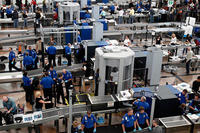
A study by Duke University, partially funded by DHS, found that TSA screeners may be slower than amateur screeners when it comes to performing visual searches, but the TSA screeners are better at detecting contraband.
-
-
Airport baggage scanning: slow, steady pace yields better results
Next time you are doing a slow burn in security screening at the airport, calm yourself with the assurance that a more deliberate baggage scanner may do a better job. Researchers find that systematic searching frees up memory to do a better job at scanning.
-
-
Detecting explosives, not toothpaste
Researchers want airports, border checkpoints, and others to detect homemade explosives made with hydrogen peroxide without nabbing people whose toothpaste happens to contain peroxide. This is part of the challenge faced in developing a portable sensor to detect a common homemade explosive called a FOx (fuel/oxidizer) mixture, made by mixing hydrogen peroxide with fuels.
-
-
Highly sensitive polymer detects IEDs
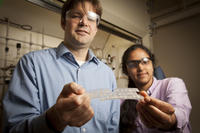
A chemical which is often the key ingredient in improvised explosive devices (IEDs) can be quickly and safely detected in trace amounts by a new polymer created by a team of Cornell University chemists. The polymer, which potentially could be used in low-cost, handheld explosive detectors and could supplement or replace bomb-sniffing dogs.
-
-
DHS debars scanner maker from government contracts
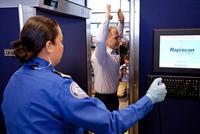
The Transportation Security Administration (TSA) has sent OSI Systems, the manufacturer of airport body scanners, a debarment notice which would prevent the company from receiving government contacts in the future. The notice was sent to the company after TSA determined that the company had failed to address security concerns about its scanners.
-
-
Terahertz technology helps to see more with less
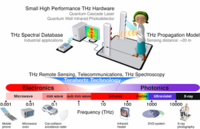
Terahertz technology is an emerging field which promises to improve a host of useful applications, ranging from passenger scanning at airports to huge digital data transfers. Terahertz radiation sits between the frequency bands of microwaves and infrared radiation, and it can easily penetrate many materials, including biological tissue. The energy carried by terahertz radiation is low enough to pose no risk to the subject or object under investigation.
-
More headlines
The long view
Prototype Self-Service Screening System Unveiled
TSA and DHS S&T unveiled a prototype checkpoint technology, the self-service screening system, at Harry Reid International Airport (LAS) in Las Vegas, NV. The aim is to provide a near self-sufficient passenger screening process while enabling passengers to directly receive on-person alarm information and allow for the passenger self-resolution of those alarms.
